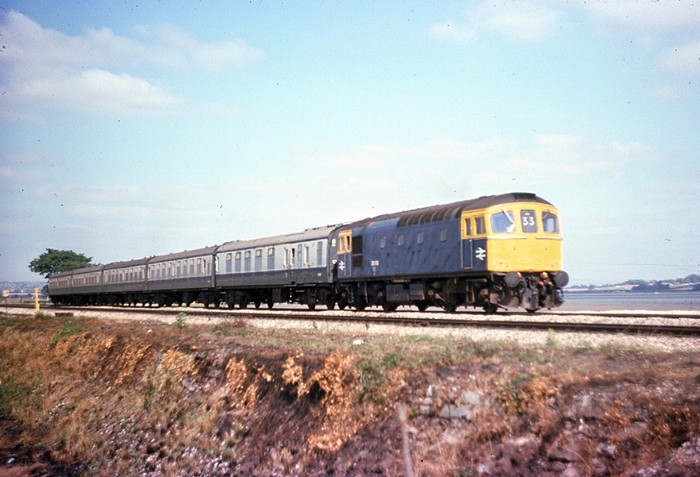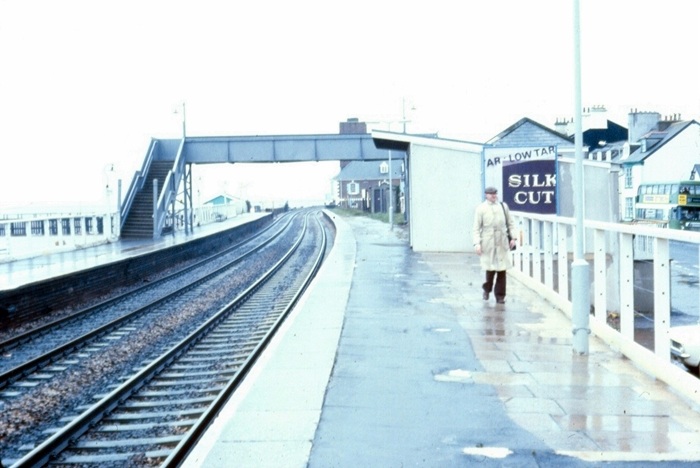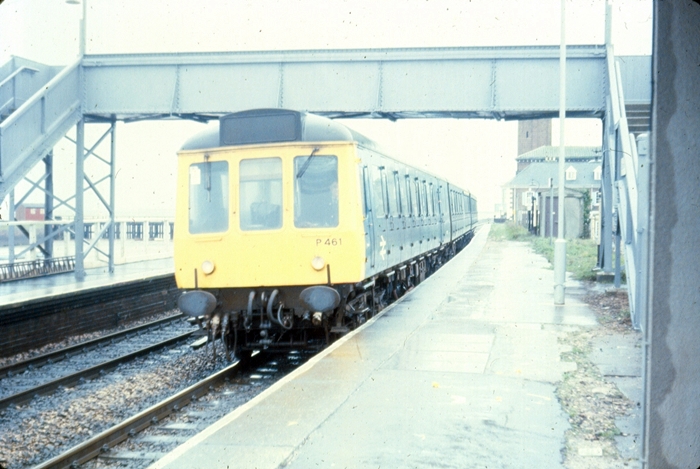
Over the weekend of 21st/22nd May 1892, the 106 route miles of line west of Exeter was converted to standard gauge, some 4-foot 8½-inches wide. By this time, the only part of the GWR network that lacked the mixed gauge was the section of line between Exeter and Truro. At this stage and, indeed, after the works, there were three sidings at Starcross, one of which was the aforementioned coal siding to the former pumping house. This fed off a loop on the ‘’up’’ side, south of the pumping house. The remaining two sidings, both northward-facing, flanked either side of the running lines, immediately south of the platforms.
The gauge conversion of 1892 allowed the widening of the rather slim ‘’down’’ platform. It was followed in 1895 by the building of a roofed footbridge between both platforms. The overall roof was taken down in 1906, but the original SDR timber building on the ‘’up’’ platform retained. This was fitted with a standard downward-sloping canopy. The ‘’down’’ side became host to a timber waiting shelter, and these works coincided with the removal of those two sidings which flanked the running lines, immediately south of the platforms.
In 1917, the War Department commissioned a siding running southwards from the ‘’up’’ line, about 400-yards south of the platforms. In the following year, a new signal box was brought into use on the site of the previous cabin in 1918. This was a ‘’Type 7D’’ GWR cabin, 13-foot-high, 16-foot wide, and 20-foot 6-inches long. It comprised a 28-lever frame, and was a of a standard design which was built by the GWR throughout its network between 1906 and 1925. It was equipped with Spagnoletti block instruments (named after Charles E. Spagnoletti, the GWR’s Chief Electrician & Telegraph Superintendent), which were used universally on the GWR’s double-track lines. The signal box was later equipped with Western Region three-position instruments.
The War Department siding was lifted circa 1920, but major track rationalisation commenced under British Railways (WR) auspices. On 16th April 1961, the ‘’up’’ side loop was disconnected from the running lines at its northern end. This siding, which formerly served the coal merchant within the ex-pumping house, now became dead-end. At its southern end, the siding was connected to the ‘’down’’ line by means of a single-slip diamond crossover. The siding and crossover were then taken out of use completely on 16th February 1969. General goods traffic had earlier ceased on 6th September 1965.
The signal box closed on 16th December 1971 and was soon after demolished. The station soldiered on in its 1906 form, complete with SDR ‘’up’’ station building. Sadly, however, the timber buildings were flattened in 1981: the ‘’up’’ side became host to a soulless waiting shelter and the ‘’down’’ platform lacked any form of weather protection. Prior to this, the 1895 footbridge had lost its roof, but survived the rebuilding until being replaced in December 1999, eliminating the last trace of the pre-nationalisation station.
In the meantime, there had been changing fortunes for the ex-pumping house. It had ceased to be a Methodist chapel in 1958. At one stage threatened with demolition, a 1979 Listed Building status secured its immediate future. In 1982, part of the building became host to a museum, dedicated to the atmospheric railway system. Little over a decade later, the building was taken over by a sailing club, and it is in this role it remains to this day.

Southern Region motive power on Western Region lines. Class 33 No. 33013 is seen on the northern approaches to Starcross, at Powderham. © David Glasspool Collection

A southward view from the ''up'' platform shows the station immediately after rebuilding. On the right is the single shelter and public toilets which replaced the original SDR timber building earlier that year. The ''down'' side also lost its timber shelter, but the 1895 GWR footbridge remained, albeit roofless. The jetty to the ferry is on the left, behind the platform, and the cut-down chimney of the atmospheric pump house can just be seen in the background. © David Glasspool Collection

A northward view shows weeds encroaching on the ''up'' platform, and that old-style lamps still existed. The public track foot crossing at the ends of the platforms linked the road with the edge of the Exe Estuary. © David Glasspool Collection

Three-car Class 117 DMU No. P461 (''P'' for Plymouth), trundles into the ''up'' platform on a very wet day. On the left can be seen the jetty for the Exmouth Ferry. The ferry operation was British Rail owned until being sold in the year of this photograph. © David Glasspool Collection
Return to the Kent Rail Homepage or alternatively, check for Updates.
Website & Copyright information - Links - Contact the Webmaster